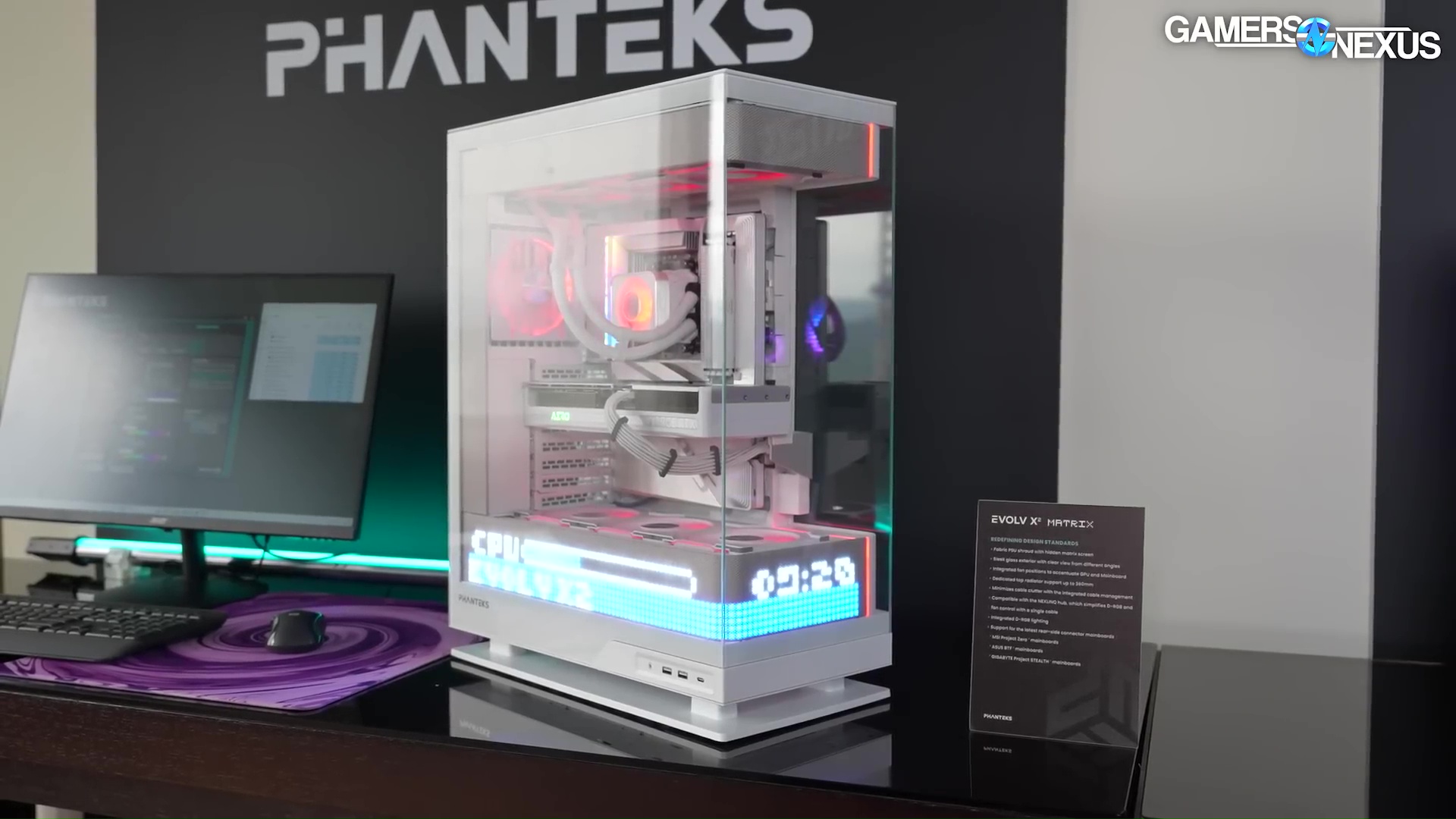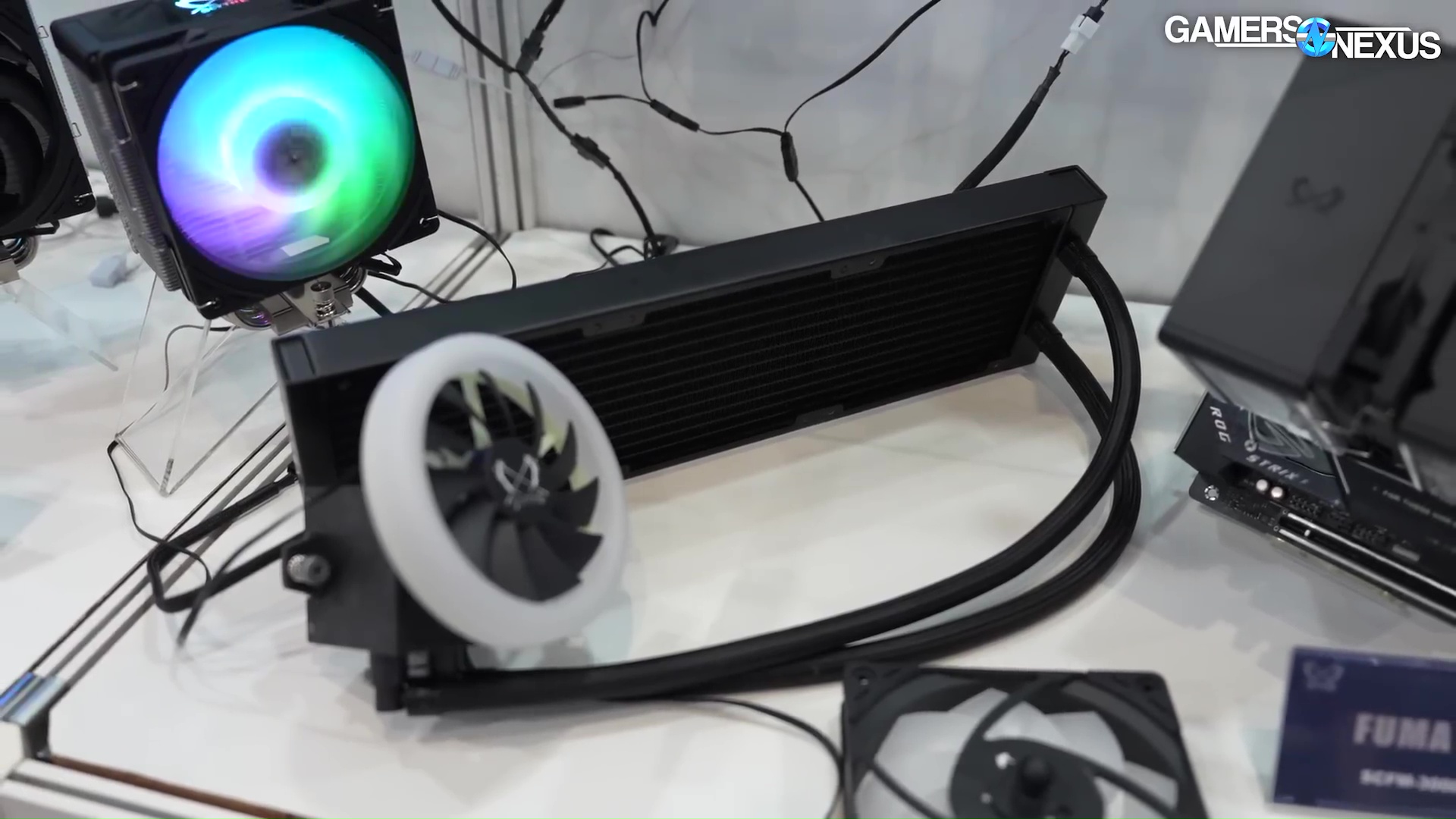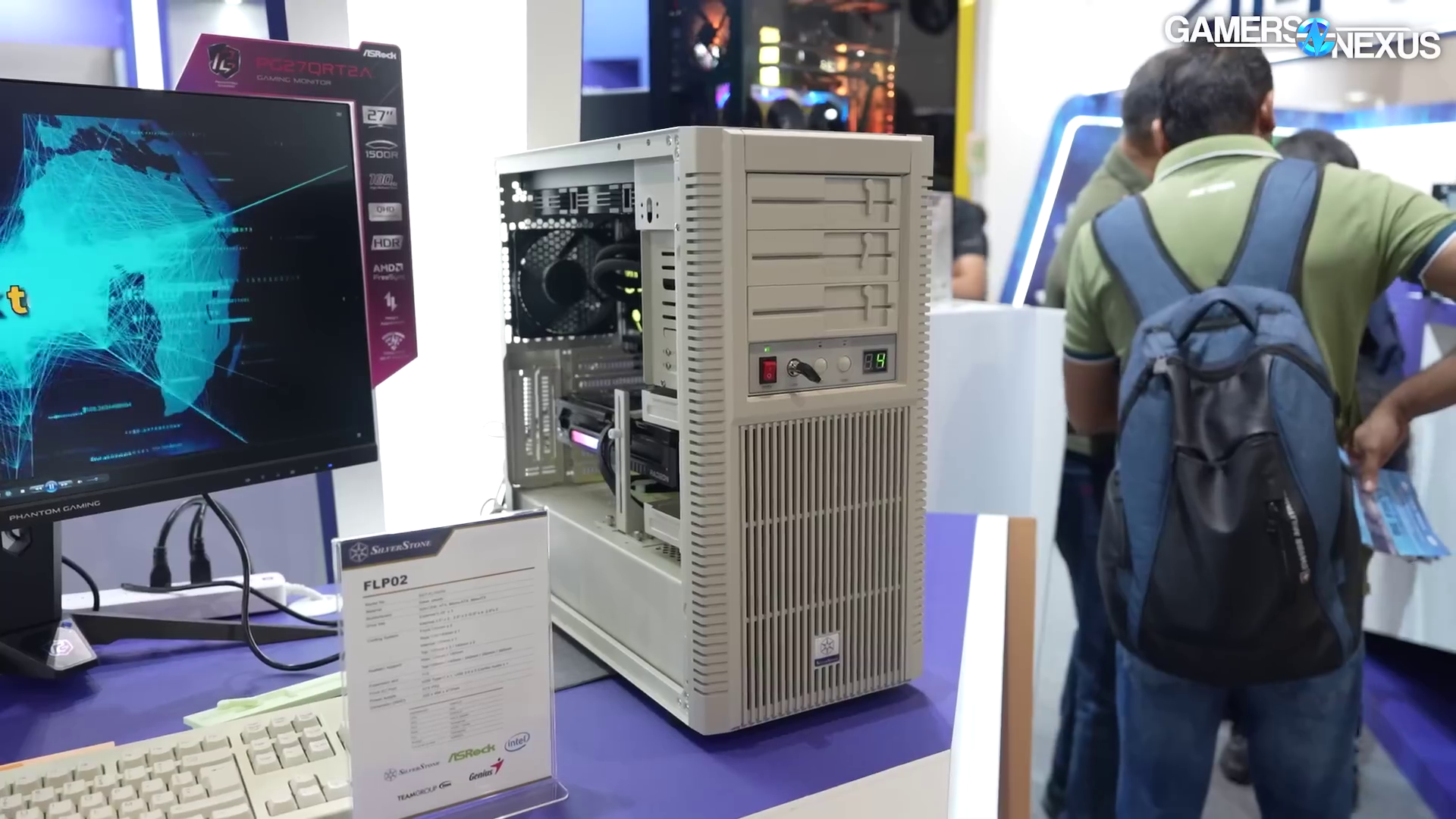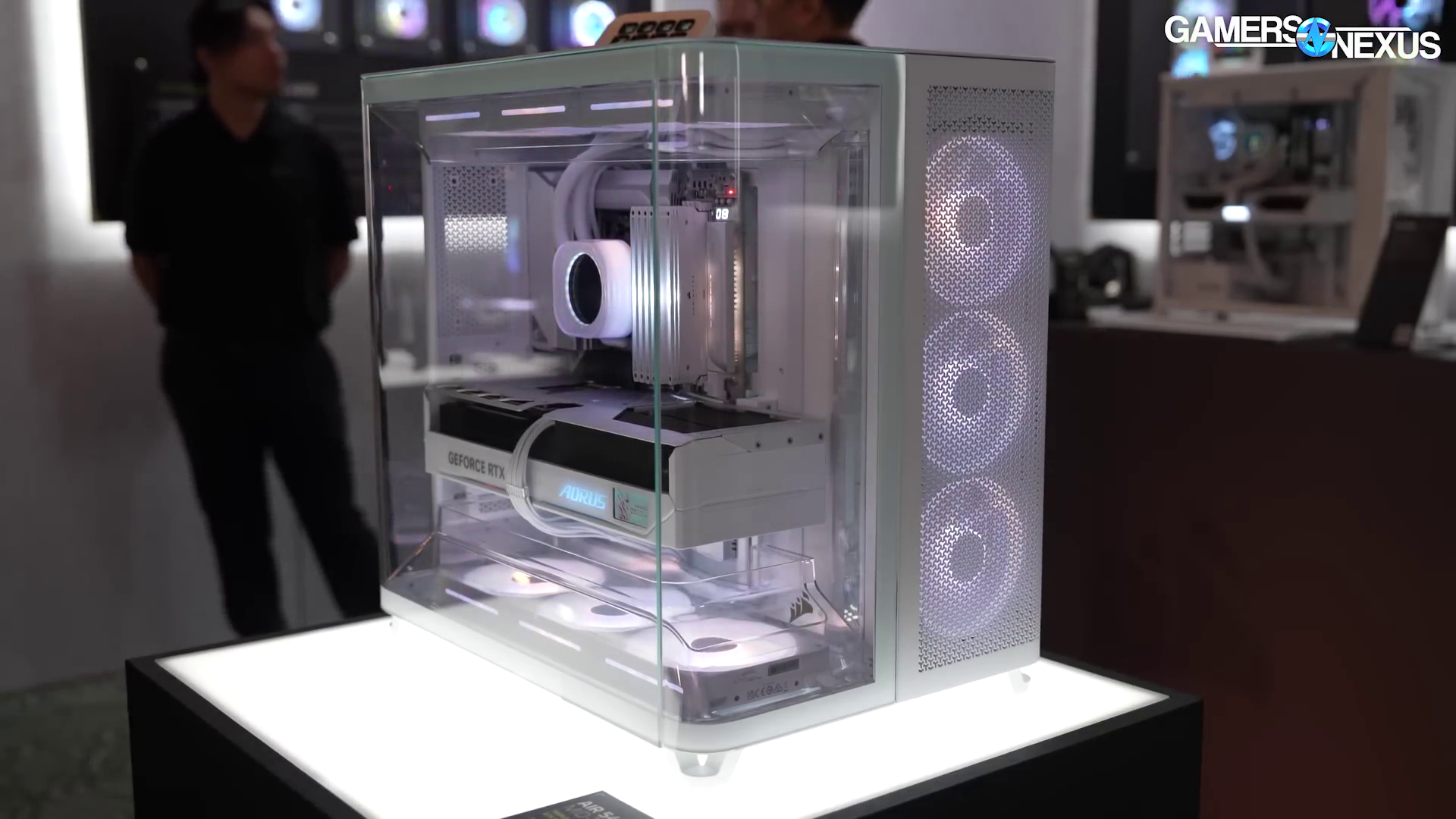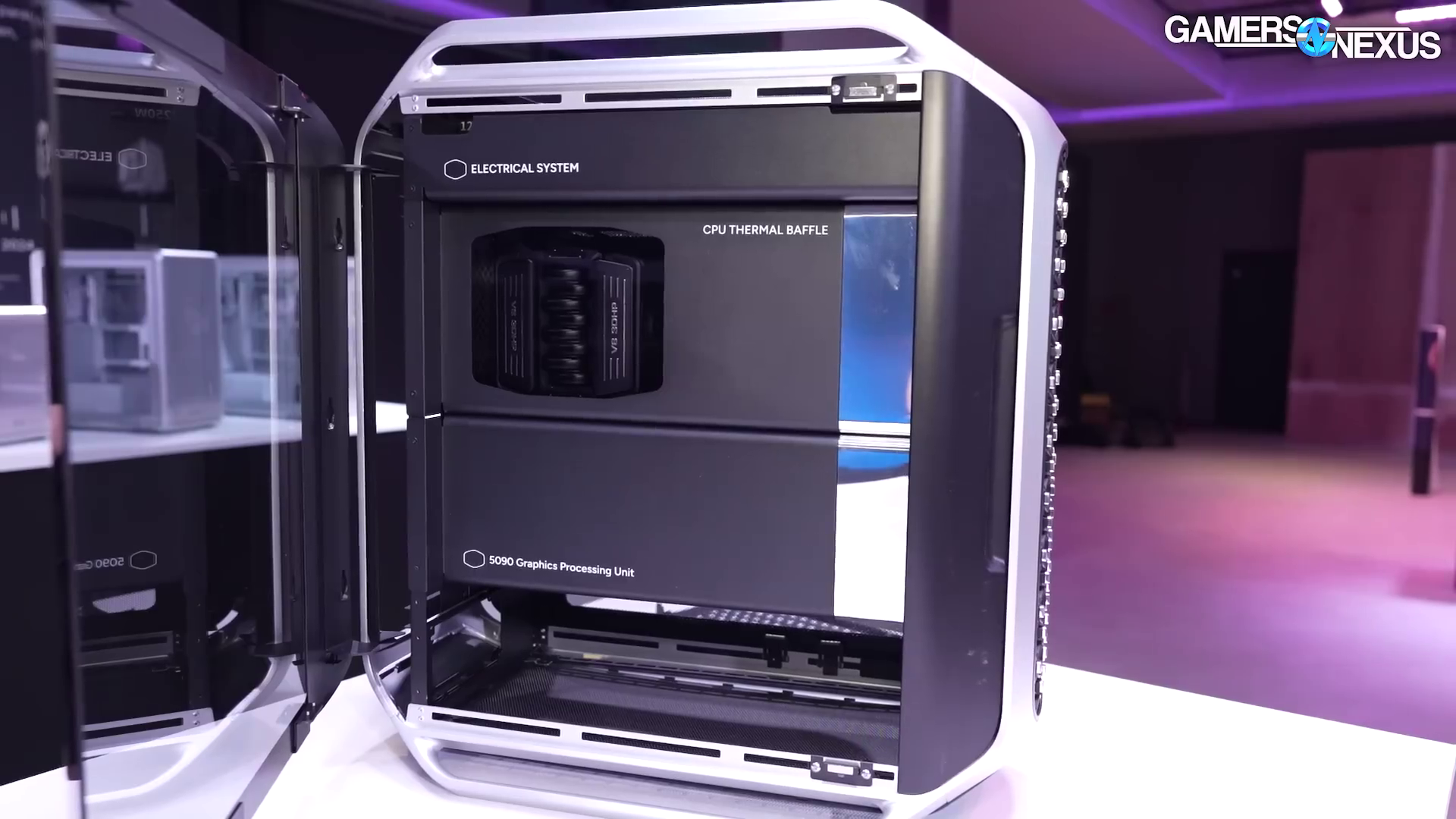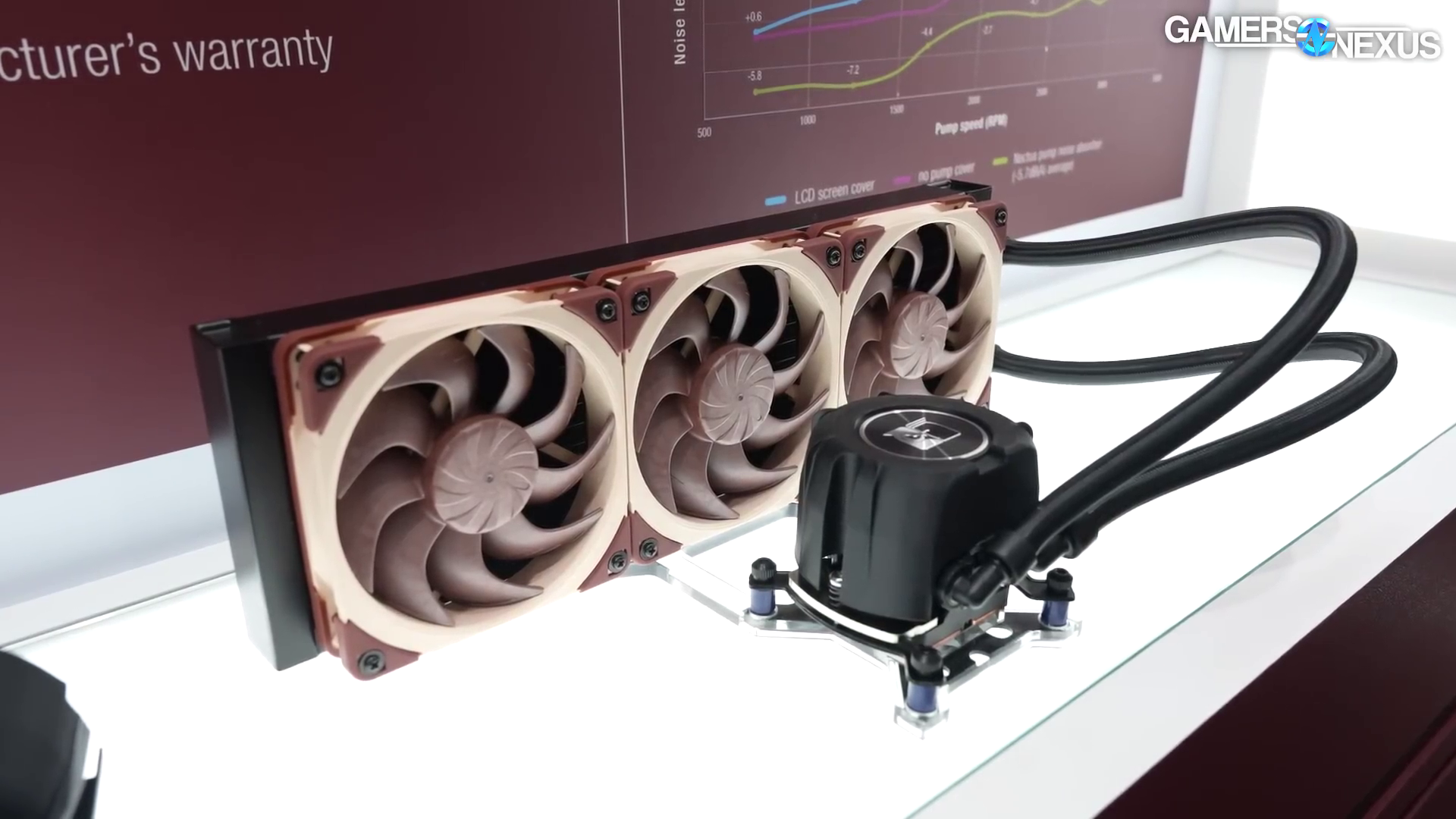6 Years to Make a Fan, G370A Budget Case, & Phanteks Technical Fan Discussion, ft. CTO
Cases News 6 Years to Make a Fan, G370A Budget Case, & Phanteks Technical Fan Discussion, ft. CTOJune 9, 2025Last Updated: 2025-06-09We cover Phanteks’ new G370A budget case, the XT M3, and the Evolv X2 MatrixThe HighlightsPhanteks’ new X2 Matrix case has 900 LEDs and is aiming to be around Phanteks’ G370A is a case that includes 3x120mm fansThe company has a new T30-140 fan that required 6 years of engineering to makeTable of ContentsAutoTOC Grab a GN Tear-Down Toolkit to support our AD-FREE reviews and IN-DEPTH testing while also getting a high-quality, highly portable 10-piece toolkit that was custom designed for use with video cards for repasting and water block installation. Includes a portable roll bag, hook hangers for pegboards, a storage compartment, and instructional GPU disassembly cards.IntroWe visited Phanteks’ suite at Computex 2025 and the company showed off several cases along with a fan that took the company roughly 6 years to make.Editor's note: This was originally published on May 21, 2025 as a video. This content has been adapted to written format for this article and is unchanged from the original publication.CreditsHostSteve BurkeCamera, Video EditingMike GaglioneVitalii MakhnovetsWriting, Web EditingJimmy ThangPhanteks Matrix CasesWe’ve talked about Phanteks’ X2 case in the past but the company was showing off its new Matrix version, which has matrix LEDs. The X2 Matrix has 900 LEDs in a 10x90 layout. It’s supposed to be about to more expensive than the base X2, which means it should end up around The interesting thing about the case is that the LEDs wrap around the chassis. In terms of communication, the LEDs connect to the motherboard via USB 2.0 and use SATA for power. This allows Phanteks to bypass a WinRing 0 type situation. Another Matrix case had 600 of them in a 10x60 LED configuration and is supposed to be about Phanteks also has software that allows you to reconfigure what the LEDs display. When we got to the company’s suite, it had been programmed to say, “Gamers Nexus here,” which was cool to see. We also saw that the LEDs can also be used to highlight CPU temperature. Phanteks G370A Grab a GN15 Large Anti-Static Modmat to celebrate our 15th Anniversary and for a high-quality PC building work surface. The Modmat features useful PC building diagrams and is anti-static conductive. Purchases directly fund our work!Phanteks also showed off its G370A case, which is a case that includes 3x120mm fans in the front coupled with a mesh front that offers 38% hole porosity. The company tells us that manufacturing typically offers around 25% porosity. It has a glass side panel and the back side panel of the case is just steel and has no ventilation. Taking a look at the placement of the front fans, we asked Phanteks why they weren’t higher on the case so the bottom fan could get more exposure to the bottom power supply shroud area and the answer the company gave us was simply clearance for a 360mm radiator at the top. There’s not a lot of room for the air coming into the shroud. Some of it will go through the cable pass-through if it’s empty. The back of the case features a drive mount.XTM3The company also showed off a Micro ATX case called the XTM3. It comes with 3 fans and is For its front panel, it has a unique punch out for its fans. The top panel is part standard ventilation but it does have one side that provides less airflow, which covers where the PSU would exhaust out of. The side panel does have punch-outs for the PSU, however. We don’t test power supplies, though that may change in the future. Power supplies can take a lot of thermal abuse, however, so we’re not super concerned here. The case should be shipping in the next month or so and is 39.5 liters, which includes the feet. We appreciate that as not a lot of companies will factor that in. There’s also a lot of cable management depth on the back and the case also supports BTF. In addition, there’s a panel that clamps down all of the power supply cables. T30 FanPhanteks’ T30 fan took the company 6 years to make and is a 140mm fan. The company is competing with Noctua in the high-end fan space, but is going for a grey theme instead of brown. Phanteks CTO Tenzin Rongen Interview Visit our Patreon page to contribute a few dollars toward this website's operationAdditionally, when you purchase through links to retailers on our site, we may earn a small affiliate commission.Finally, we interviewed Phanteks CTO Tenzin Rongen to discuss technical details behind the company’s long-developed fans. Make sure to check it out in our video.
#years #make #fan #g370a #budget
6 Years to Make a Fan, G370A Budget Case, & Phanteks Technical Fan Discussion, ft. CTO
Cases News 6 Years to Make a Fan, G370A Budget Case, & Phanteks Technical Fan Discussion, ft. CTOJune 9, 2025Last Updated: 2025-06-09We cover Phanteks’ new G370A budget case, the XT M3, and the Evolv X2 MatrixThe HighlightsPhanteks’ new X2 Matrix case has 900 LEDs and is aiming to be around Phanteks’ G370A is a case that includes 3x120mm fansThe company has a new T30-140 fan that required 6 years of engineering to makeTable of ContentsAutoTOC Grab a GN Tear-Down Toolkit to support our AD-FREE reviews and IN-DEPTH testing while also getting a high-quality, highly portable 10-piece toolkit that was custom designed for use with video cards for repasting and water block installation. Includes a portable roll bag, hook hangers for pegboards, a storage compartment, and instructional GPU disassembly cards.IntroWe visited Phanteks’ suite at Computex 2025 and the company showed off several cases along with a fan that took the company roughly 6 years to make.Editor's note: This was originally published on May 21, 2025 as a video. This content has been adapted to written format for this article and is unchanged from the original publication.CreditsHostSteve BurkeCamera, Video EditingMike GaglioneVitalii MakhnovetsWriting, Web EditingJimmy ThangPhanteks Matrix CasesWe’ve talked about Phanteks’ X2 case in the past but the company was showing off its new Matrix version, which has matrix LEDs. The X2 Matrix has 900 LEDs in a 10x90 layout. It’s supposed to be about to more expensive than the base X2, which means it should end up around The interesting thing about the case is that the LEDs wrap around the chassis. In terms of communication, the LEDs connect to the motherboard via USB 2.0 and use SATA for power. This allows Phanteks to bypass a WinRing 0 type situation. Another Matrix case had 600 of them in a 10x60 LED configuration and is supposed to be about Phanteks also has software that allows you to reconfigure what the LEDs display. When we got to the company’s suite, it had been programmed to say, “Gamers Nexus here,” which was cool to see. We also saw that the LEDs can also be used to highlight CPU temperature. Phanteks G370A Grab a GN15 Large Anti-Static Modmat to celebrate our 15th Anniversary and for a high-quality PC building work surface. The Modmat features useful PC building diagrams and is anti-static conductive. Purchases directly fund our work!Phanteks also showed off its G370A case, which is a case that includes 3x120mm fans in the front coupled with a mesh front that offers 38% hole porosity. The company tells us that manufacturing typically offers around 25% porosity. It has a glass side panel and the back side panel of the case is just steel and has no ventilation. Taking a look at the placement of the front fans, we asked Phanteks why they weren’t higher on the case so the bottom fan could get more exposure to the bottom power supply shroud area and the answer the company gave us was simply clearance for a 360mm radiator at the top. There’s not a lot of room for the air coming into the shroud. Some of it will go through the cable pass-through if it’s empty. The back of the case features a drive mount.XTM3The company also showed off a Micro ATX case called the XTM3. It comes with 3 fans and is For its front panel, it has a unique punch out for its fans. The top panel is part standard ventilation but it does have one side that provides less airflow, which covers where the PSU would exhaust out of. The side panel does have punch-outs for the PSU, however. We don’t test power supplies, though that may change in the future. Power supplies can take a lot of thermal abuse, however, so we’re not super concerned here. The case should be shipping in the next month or so and is 39.5 liters, which includes the feet. We appreciate that as not a lot of companies will factor that in. There’s also a lot of cable management depth on the back and the case also supports BTF. In addition, there’s a panel that clamps down all of the power supply cables. T30 FanPhanteks’ T30 fan took the company 6 years to make and is a 140mm fan. The company is competing with Noctua in the high-end fan space, but is going for a grey theme instead of brown. Phanteks CTO Tenzin Rongen Interview Visit our Patreon page to contribute a few dollars toward this website's operationAdditionally, when you purchase through links to retailers on our site, we may earn a small affiliate commission.Finally, we interviewed Phanteks CTO Tenzin Rongen to discuss technical details behind the company’s long-developed fans. Make sure to check it out in our video.
#years #make #fan #g370a #budget
0 Comments
0 Shares
0 Reviews




